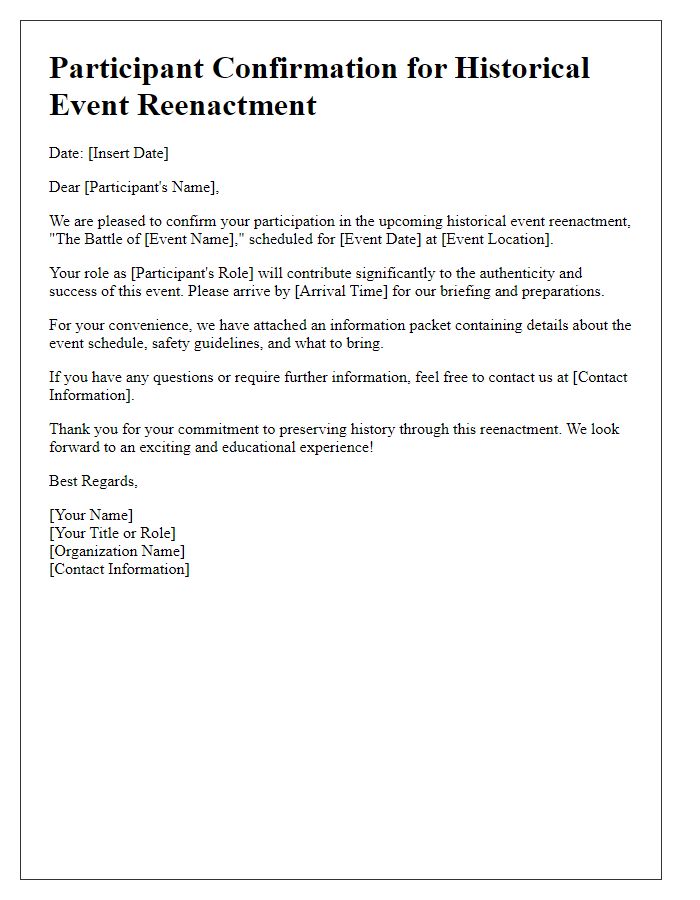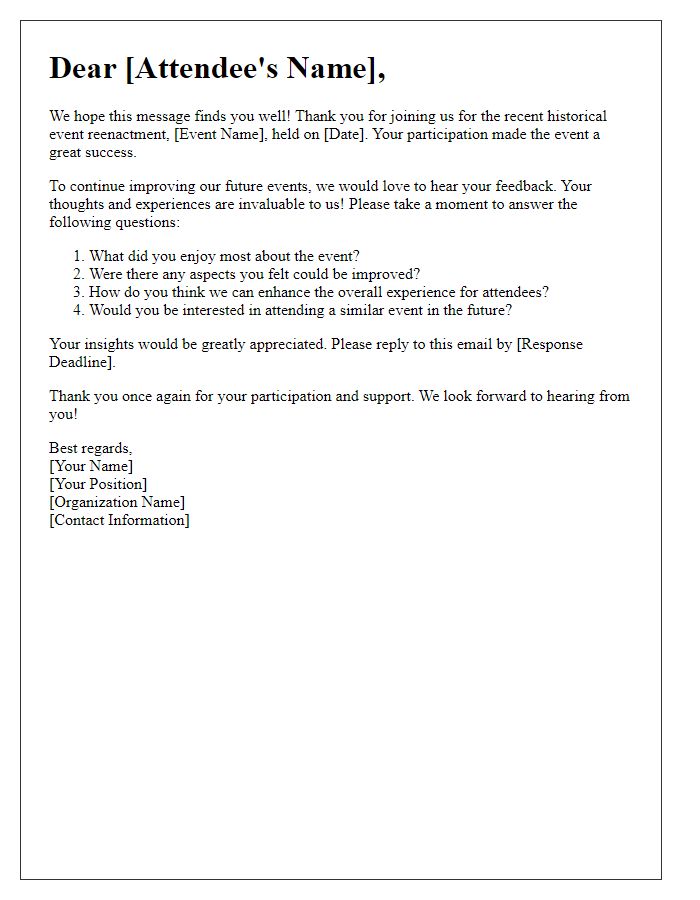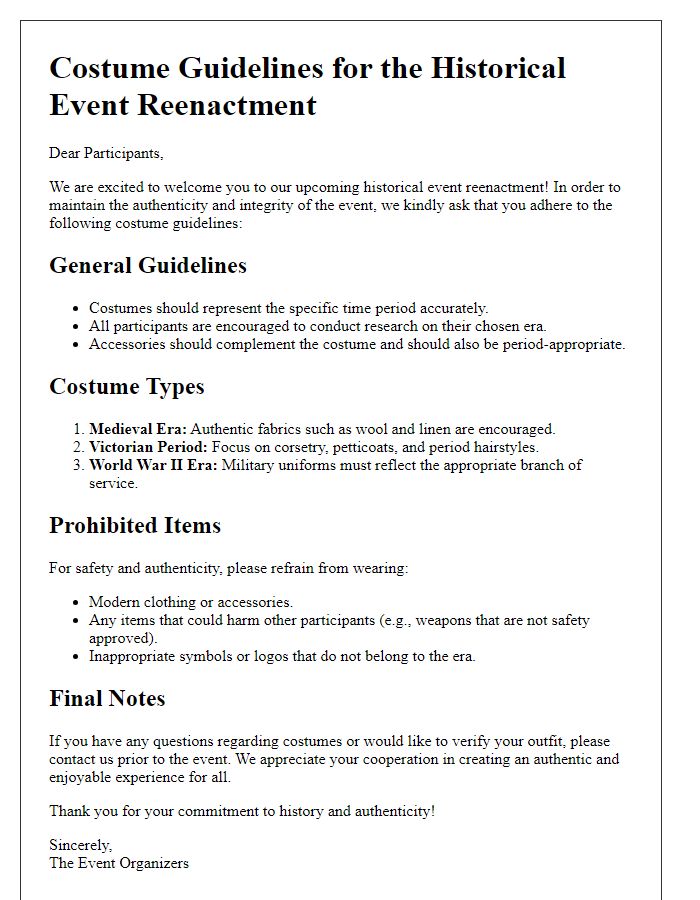Are you passionate about history and enjoy participating in events that bring the past to life? Reenacting historical moments allows us to connect with our heritage in a unique and immersive way. Whether you're donning period attire, practicing old-world skills, or simply soaking in the atmosphere, these events foster a greater appreciation for the stories that shaped our world. Join us as we delve into the fascinating world of historical reenactments and uncover the excitement they hold!

Event Details and Historical Significance
The Battle of Gettysburg, occurring from July 1 to July 3, 1863, stands as a pivotal event in the American Civil War. This three-day confrontation, fought in and around the town of Gettysburg, Pennsylvania, involved approximately 93,921 Union soldiers against around 71,699 Confederate troops. The battle is notable for being the largest fought during this conflict and for marking a significant turning point, as it halted the advance of Confederate General Robert E. Lee into the North. The struggle culminated in a Union victory, resulting in an estimated 51,000 soldiers reported as casualties, a profound loss that underscored the war's brutality. The event not only reshaped military strategies but also inspired President Abraham Lincoln's renowned Gettysburg Address, which emphasized national unity and the fight for equality.
Participant Requirements and Expectations
Participants in historical event reenactments, such as those commemorating the American Civil War (1861-1865), must adhere to specific requirements to ensure authenticity and respect for history. Attire must replicate the period accurately, with Union and Confederate uniforms adhering to guidelines set by organizations like the North-South Skirmish Association for proper fabric types, colors, and insignia. Equipment, including muskets (typically .58 caliber rifled muskets), cannons, and period-appropriate camping gear, must be in line with historical accuracy, avoiding modern materials and safety features. Knowledge of historical facts surrounding the event is essential; participants are expected to understand key battles, such as Gettysburg (July 1-3, 1863), and significant figures like Robert E. Lee and Ulysses S. Grant. Engagement in educational demonstrations highlights skills such as drilling and camp life but requires a respectful demeanor towards spectators and fellow reenactors. Safety protocols must be strictly followed, including firearm handling and medical readiness, ensuring the protection of all participants during the dynamic reenactment events.
Scheduling and Itinerary Information
Historical event reenactments, such as the Civil War Battle of Gettysburg (July 1-3, 1863), provide immersive experiences that transport participants and audiences to pivotal moments in history. The itinerary typically includes key activities like morning drills, afternoon skirmishes, and evening campfire storytelling. Participants gather at designated locations, such as the Gettysburg National Military Park, where numerous reenactors, dressed in period-accurate uniforms, engage in battles and demonstrations (complete with artillery, musket firing, and cavalry maneuvers). Authentic craftsmanship and attention to historical detail, including the use of historical flags and tents, enhance the visual experience. Evening celebrations often feature music, food representing the era, and discussions led by historians focusing on the significance of the events portrayed, providing an engaging educational opportunity for all attendees.
Costume and Prop Guidelines
Historical event reenactments, such as the American Civil War (1861-1865) reenactments at Gettysburg National Military Park, require participants to adhere to specific costume and prop guidelines for authenticity. Costumes should reflect the clothing styles of the period, emphasizing fabrics like wool and cotton, with color palettes in muted tones that correspond with the era's fashion. Props must include period-appropriate items, such as replica rifles or muskets, specifically designed to mimic the looks of infantry weapons used during the Civil War. Accessories like leather belts, canteens, and hats should align with ranks and roles, ensuring historical accuracy. Participants must avoid modern materials and styles to create an immersive experience for spectators, enhancing the educational value of the reenactment.
Contact Information and Support Resources
The historical event reenactment scheduled for July 4, 2024, at Independence Hall, Philadelphia, Pennsylvania, will immerse participants in the revolutionary fervor of 1776. This significant venue, where the Declaration of Independence was adopted, provides a compelling backdrop for engaging portrayals of key figures, including Thomas Jefferson and Benjamin Franklin. Support resources are available through the Reenactors' Guild, offering guides on period-appropriate attire, historical accuracy, and educational materials about the American Revolution. Contacts include event coordinators reachable via email at info@reenactmentguild.org or by phone at (215) 555-0199. Community engagement activities planned for the event include interactive discussions, workshops on 18th-century life, and demonstrations of Revolutionary War-era crafts.
Letter Template For Historical Event Reenactment Samples
Letter template of invitation for historical event reenactment participation

Letter template of volunteer recruitment for historical event reenactment

Letter template of schedule announcement for historical event reenactment

Letter template of participant confirmation for historical event reenactment

Letter template of thank you note for historical event reenactment supporters

Letter template of feedback request for historical event reenactment attendees








Comments